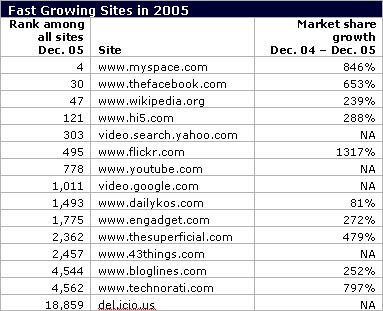I was asked to write an article for the Media Morgen conference organised by VRT (national television and radio in Belgium) and it's website some time ago. But after all the energy I put in it they never published it. Too bad, but no worries, here’s an English version for you.
(By the way, if you already believe in CGC, start reading after the table.)
Creativity is what makes the difference between man and animals, and that creativity is constantly looking for a way to spread itself. It started with the prehistoric paintings in the caves of Lasceaux, boomed thanks to the invention of book printing and even Uncle Joe’s boring slide show is a proof of that. Luckily those slide show evenings are a thing of the past; today a wide range of tools is available to let our creativity blossom. The PC has become a semi-professional print shop, making bad photos is more difficult then making good ones (or you just shoot until you have a good one), load digital video into you PC, add a music track in MP3 format and in two hours you can cut and paste an entertaining piece of video together.
The obligatory slide show is being replaced by a CD, DVD or website (Flickr.com or Youtube.com) where family pics and videos can be shared worldwide. Friends on the other side of the country (or globe) can now too enjoy your work, whereas there is not obligation of those who happen to live close but are not interested in what you want to share.
With broadband becoming ubiquitous (at least in some countries) this evolution is truly booming. Anybody can spread his/her creations very cheaply (and simply) worldwide.
Just look at a number “consumer generated content” websites:
 (source: iMediaconnection.com)
(source: iMediaconnection.com)
But what’s the secret behind this success? In the entertainment business democracy and consensus lead to average results. Soaps you watch half asleep and reading a newspaper at the same time are the result. Have a similar story that really happened told by someone who was there, and the result will be totally different. Less professional, but from the hart. A bunch of people will not like it, but a small group won’t miss it for the world. And that is the secret of consumer generated content. A community that consciously chooses to dedicate a part of it’s time and attention to for them truly compelling content.
The future of our leisure time will be increasingly taken up by this CGC. I expect that we will find 50% of our entertainment in the long tail of CGC. There will always be room for professional material, but a big part will be taken up by niche-content with which we feel a strong connection, something typical for the communities in which we spend our lives.
This means the role of journalists, program makers, TV/Radio stations, editors and publishers is fundamentally changing. The playing field is populated with new competitors, ranging from Skynet or MSN as a possible channel for publishing CGC, over Telenet’s iDTV of VodafoneLive (mobile) who provide an infrastructure, to mega-blogs like Engadget and zattevrienden.be who create their own channels. Everybody in this market wonders what their role will be. Medium or moderator, catalyst or filter, all options are open.
Offering platforms, both soft- and hardware, is already a very competitive terrain. MSN against Skynet, Belgacom ADSL against Telenet Internet and traditional publishers (HLN.be) have started the fight for the consumer.
Some people see the future of the professional media specialist in safeguarding the quality of what appears in the media. Intelligent journalists check their sources and only deliver quality, is what they say. On can argue about that, but more importantly this is old-school thinking. The consumer decides himself what he or she considers to be correct or relevant. And to help them out, there are a number of online tools, ranging from a simple voting system to complex algorithms that map out the relevance of an item. Check out memeorandum.com, bloglines.com or dig.com. The relevant content pops up automatically.
A truly innovative media company must embrace consumers and coach them in the development of good content. Teach people to handle new media, support them in their creativity and help to reach their audience. In this way even small regions (like the one I live in) can play a creative role in the world, with needing loads of cash and multinational structures.